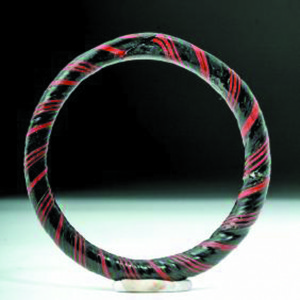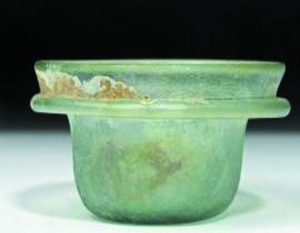Imagine wearing a pair of earrings or a bracelet made in ancient Egypt or a ring made during the Viking era? These and other objects, such as glass and pottery are still turning up at auctions that specialize in antiquities. They often cost less than mass produced contemporary items. $200 for a ring or earrings and a glass vase are among the offerings at an upcoming auction at Artemis Auction Gallery, Erie, Colorado, who specialize in antiquities. They also guarantee the authenticity of the items.
Collectors have always been fascinated by antiquities. In 15th century Florence, Italy, interest was so great that Michelangelo made his first sale with a statue he had made “in the manner of a” Roman antique.
CLUES: Selling antiquities can be a tricky business and full of fakes and reproductions. Faking was going on by the time Napoleon made his expeditions to the Nile. They included copies and variations of Egyptian bronze statuettes made in the 17th and 18th centuries. By the late 19th century British excavations stirred the interests of tourists and collectors alike. The result was hundreds of faked small artifacts, usually figures and pottery.Especially popular were amulets of Isis and Ra in blue faience. Would you know if they really are?
 One of my favorite books, now out of print, “Fakes,” by author Otto Kurz in 1948, discusses Greek and Roman sculptures and their 20th century copies. One example mentioned is an 18th century fake marble portrait bust of Julius Caesar, complete with a damaged nose. It was acquired in 1818, as an original by the British Museum. As for ancient glass, old iridescence is layered with corrosion. The fakes have a milky quality.Sometimes antiquities seemingly disappear through a variety of circumstances. Such was the case of a 3,000 year old statue from the reign of Pharaoh Rameses 11. The 1,100 pound, 3 ft. high block sculpture was originally uncovered in the Nile Delta in the late 19th century. In 1894 it was exhibited at the Chautauqua Institution, Chatauqua, New York. After that it was crated up and forgotten when the museum closed in 1930. It reappeared in 1983 where it was sold at a Sothebys’ auction for $341,000.
One of my favorite books, now out of print, “Fakes,” by author Otto Kurz in 1948, discusses Greek and Roman sculptures and their 20th century copies. One example mentioned is an 18th century fake marble portrait bust of Julius Caesar, complete with a damaged nose. It was acquired in 1818, as an original by the British Museum. As for ancient glass, old iridescence is layered with corrosion. The fakes have a milky quality.Sometimes antiquities seemingly disappear through a variety of circumstances. Such was the case of a 3,000 year old statue from the reign of Pharaoh Rameses 11. The 1,100 pound, 3 ft. high block sculpture was originally uncovered in the Nile Delta in the late 19th century. In 1894 it was exhibited at the Chautauqua Institution, Chatauqua, New York. After that it was crated up and forgotten when the museum closed in 1930. It reappeared in 1983 where it was sold at a Sothebys’ auction for $341,000. If you yearn to own a piece of ancient history, don’t let all of these tales from the crypt discourage you. If the seller attests to their authenticity, take a chance, but research before you do. After all scientific tests now uncover the true facts and the sellers should have documents proving these tests were made.
PHOTO CAPTION: (1) Roman glass bracelet. (2) Roman glass bowl. PHOTO CREDIT: Artemis Gallery, Erie, Colorado
















Follow Us